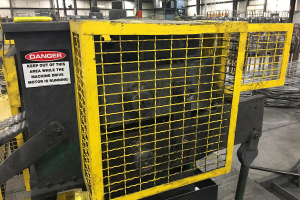How to succeed at an Informal Conference after being cited by OSHA
Receiving an OSHA citation can be a bit unnerving, but every employer should remember that receiving the citation is in some ways just the beginning, not the end, of the process.
Scott Jacoby, health and safety director for a major metals recycling business, has been on the receiving end of OSHA citations over the years. I asked him to write a guest post on how to handle the OSHA Informal Conference, which any employer may request within 15 working days of receiving a citation. The purpose of the conference is to discuss the alleged violations and negotiate a resolution if possible. Here’s what Scott has to say:
The OSHA Informal Conference is not a place to “wing it.” Over time, I have developed a basic method I call “The Script” to prepare and participate.
In my opinion, the fines are basically meaningless in most cases. The real long term risk to the business is the level of citation/violation. My general goal is to achieve a downgrade of each violation to the lowest possible level. Before the conference I have already decided what violation classifications are acceptable and what I consider to be a deal breaker. In general, this is based upon the future risk to the company of being cited for repeat and willful violations. Remember, OSHA wants to make a deal – they don’t want employers to contest violations!
Elements of “The Script”:
1. Introductions. Formally introduce each person from the company who is attending the conference. I have always found three attendees to be a good number. Most likely a representative from senior leadership, one from safety and a technical expert is enough. You need to give these folks very specific direction on what to say, when to say it and how to say it.
2. Senior leadership statement. The senior leader must express with conviction his/her belief in and commitment to providing a safe and healthful work environment.
3. Safety and health program. Review your efforts in relation to your program requirements, focusing on the positive aspects of the program. You must demonstrate your company’s commitment to making an investment in safety.
4. Enterprise-wide response. Make sure that OSHA understands that the corrective action and abatement for the items identified goes beyond the specific area that was cited and that all similar situations throughout the facility will also be corrected. Provide a quick rundown on hazard identification, risk assessment and corrective action.
5. Know more than they do. You need to be an expert on each alleged violation: manufacturer information, source standards, operator instructions, technical guidelines, OSHA compliance directives and letters of interpretation – everything!
6. Likely to cause death or serious physical harm. That is the basis of a serious violation. Make sure that OSHA has objective evidence regarding this issue on each alleged serious violation. Remember, failure to complete an inspection, audit, inventory or some other basic administrative compliance requirement, such as maintaining records, should never be the basis for a serious violation.
7. They probably made mistakes. Did they cite the wrong standard? Did they follow their own industrial hygiene sampling protocol? Did they follow the Field Operations Manual? Did they actually witness the alleged hazardous condition? Failure to follow OSHA procedures gives you very strong arguments for downgrading or deleting a violation.
8. Lawyers. Don’t bring them to the informal! But in some manner you should relate that you have already sought legal guidance on the alleged violations and are prepared to contest. However, OSHA should also be aware that you would rather come to a negotiated agreement. Have a completed and signed “Notice of Contest” letter prepared and sitting on the table during your discussions.
9. Start with the easy issues. You should be able to get some basic agreement on downgrading or deleting alleged violations that were obviously cited incorrectly. This gives you a chance to get in the flow with OSHA and move closer to the finish line. Remember, OSHA wants to settle.
10. Be done with it. Ensure you have completely abated all the violation items so that you can walk out the door and the only thing you need to do is send a check.
11. Dress appropriately. Might not seem like a big thing, but an appropriate appearance is in your favor.



1 Comment
I am looking for a copy or a format for the letter requesting an informal conference. Can you help me with this?